Why does your company need to be building marketing assets? It's a question I often get asked by rookie entrepreneurs. Here's what these startup owners don't get: if you don’t own marketing assets, you are the asset.
But what do I mean by this?
You're an asset if you’ve got to put in the time, money, and effort to generate leads and build your business. Now that's okay in your startup phase when you're fresh and eager to tackle every facet of your business. But it's not sustainable.
What happens when you want to double your revenue? You have to double the hours you work in a day. And if you don’t want to use your time to increase your revenue, you need marketing assets.
So what is a marketing asset, and how can it help your sales team sell your product or service more often?
In this article, I will explain the benefits of assets and the type of marketing assets you need to be building in order to grow your brand and customer base.
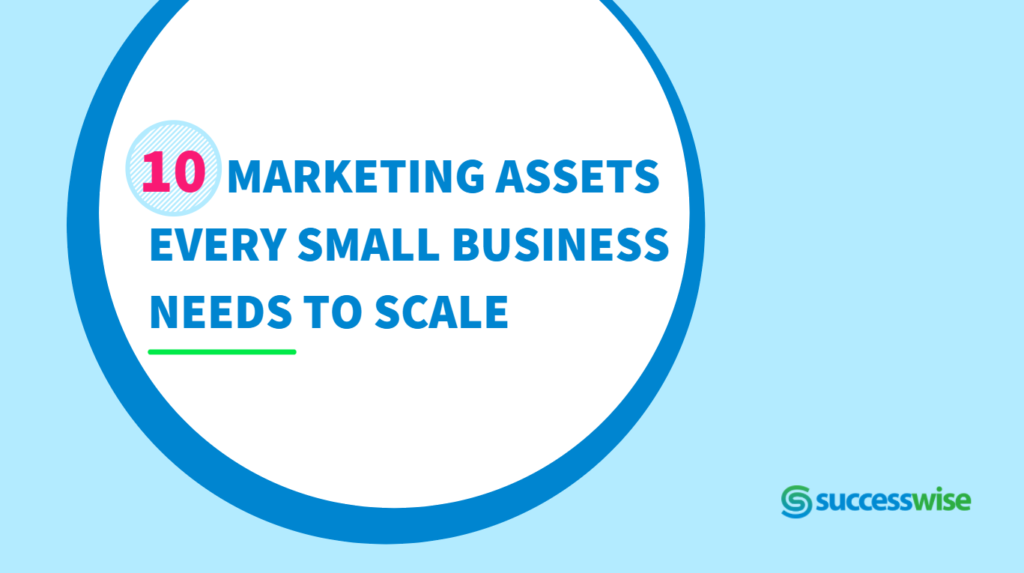
Marketing assets are the tools and resources you use to attract leads, build relationships, and make sales. Marketing assets include social media accounts, white papers, blog content, case studies, videos, published articles, industry reports, brochures, online ads, data, ebooks, digital campaigns, your CRM and CMS.
You want to treat your marketing assets like employees, except they never need time off. They work while you sleep, but that doesn't mean you should build them once, and that's it. Each asset needs to be assigned a KPI. Then you need to routinely check in to see how your marketing assets are performing.
Marketing assets can be divided into internal and external assets.
Internal marketing assets are company assets or processes that are strictly for internal use by team members. You'd have your typical marketing collateral like business cards (check out free business card template here), letterheads, sell sheets, interactive brochures, support procedures, etc. It could be a management guide or a client onboarding process. These are the standard operating procedures or gold standards for how you do business.
For example, you could have an asset specifically designed to educate and inform your sales team about the benefits of your products or services so they can better assist potential customers.
These are the marketing assets your brand uses to attract potential customers. For example, your company's marketing asset material could encompass a lead magnet, landing page, ultimate guide, report, blog article, marketing campaign, whatever.
These assets target your customer's pain points. They solve a problem and establish you as a credible source—an authority they can trust to help them get a result. It gets prospects to raise their hands and indicate interest in your company's services or products.
More importantly, assets drive action, and if you've set up your analytics, you can track exactly where that opt-in or sale originated.
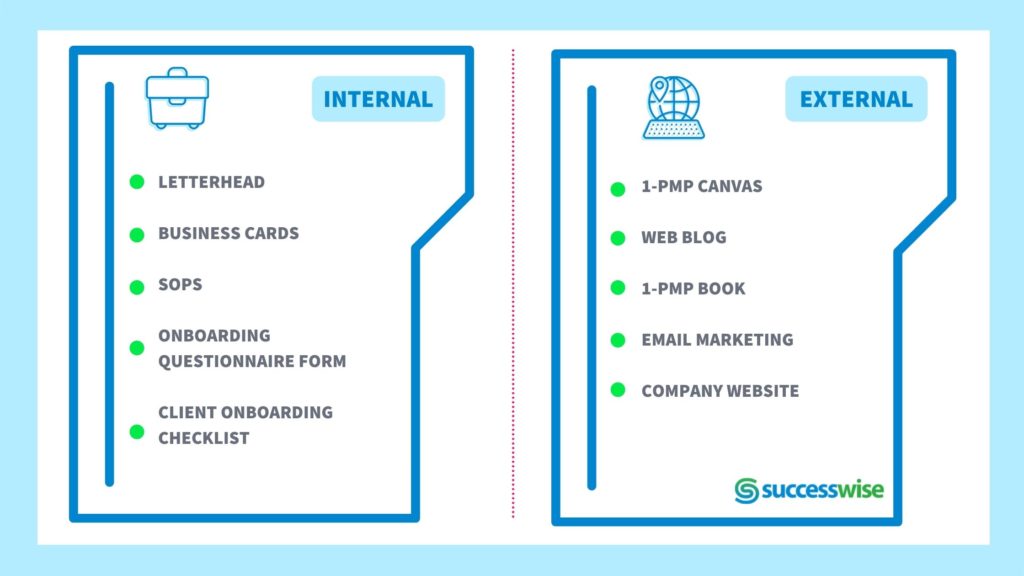
Apart from the obvious—which is they free up your time—marketing assets build trust. Most potential customers don't trust you. They've been duped by brand after brand looking to make a quick sale, so they're naturally skeptical.
Your assets position you as an authority, someone they can trust to educate, entertain, and put their best interests first. That's powerful. A good asset makes the sales process so much easier because you're not overcoming objections all of the time.
You're giving your prospect free advice you'd normally charge for—helping them get results before using your product or service. Now that's a powerful strategy for scaling your business.
Whether you're managing the marketing for a large corporation or you're a startup, you need to be building assets. Marketers will tell you that marketing assets are no different from financial assets.
If you nurture and monitor these assets closely, making vital changes when necessary, they will deliver massive returns for your company. These are just a few assets you want to think about adding to your marketing mix.
Like it or not, social media marketing is here to stay, and your clients are active on it right this very minute. So you need to make a concerted effort to build your social media assets.
But don't just jump on any social media network. Be strategic about it.
Are your customers actively engaging on the networks you're targeting? If you don't know, you need to be speaking with your existing customer base and investing time and energy in market research. It's a great way to identify which social media channels your customers love to hang out on.
For example, as a business-to-business (B2B) brand, I know my customers are active on social sites like LinkedIn, Facebook, and Instagram. So those are three social media channels I need to invest my marketing efforts in.
But it's not just about showing up. You need to create content your potential customers want to engage with, and it needs to be channel appropriate.
So whatever social media channel you choose, make sure you're creating valuable and relevant content.
Also, using AI shorts maker can significantly enhance your video content creation, enabling you to produce engaging and high-quality shorts effortlessly for platforms like YouTube and TikTok. This tool is a game-changer for marketers looking to quickly adapt and share trending content.
PLUS, don't forget to focus on building relationships. Your social media audience values relationships.
Which social media assets should you be building?
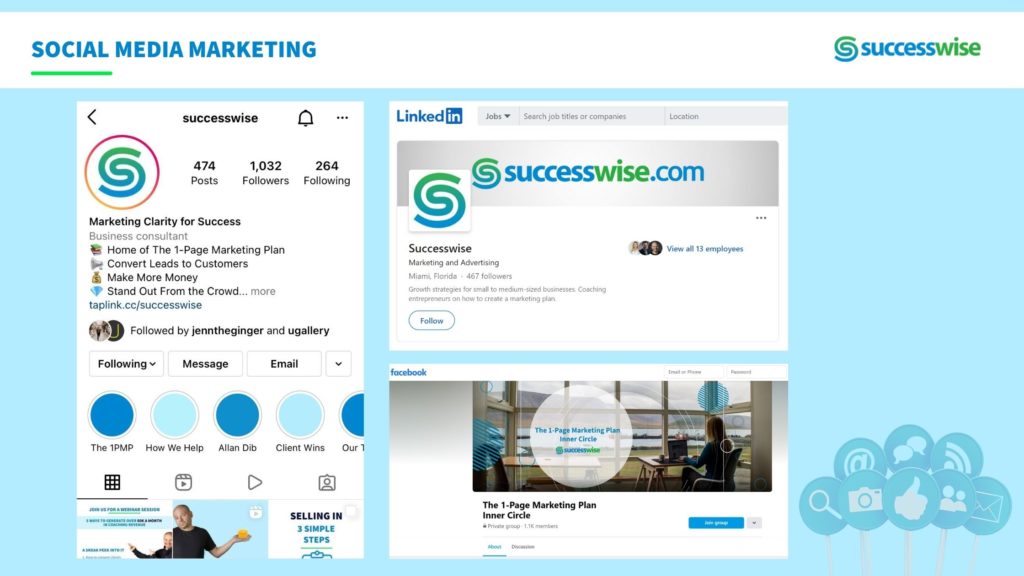
Your company's website is one of your greatest digital marketing assets. If anything, it's one of the first marketing assets you need to build because it will drive your inbound strategy. I wrote a blog about that here.
The entire purpose of my company’s website is to capture high-value leads.
Almost every web page includes a call-to-action. It could be a link to opt-in to my email newsletter or download a piece of content like worksheets, how-to guides, or infographics. It could also be a redirect to a sales page or some other related article that my readers would be interested in checking out.
Having my website and using cookies allows me to track where leads originate. Did this customer come from social media, a podcast, Amazon, an affiliate link, or one of my campaign ads?
This gives me invaluable insight into my customers and the management of my assets.
So make sure you include digital marketing in your marketing strategy and invest in a lead-generating website. It's money well spent.

Every business process needs to be mapped out. Your team needs to know what to do at every stage of a campaign, customer service, sales process, team management, employee onboarding, and much more. These processes make scaling your business and delivering a consistent experience simple.
And consistency is key to customer retention. If they never know what to expect, you'll dramatically reduce your customer lifetime value. Creating your systems doesn't need to be hard. I go into detail on how to build a world-class business system here.
Just know that your system needs to include:
Remember, systems are valuable to you, the owner, your management team and employees, customers, and investors. It's IP they're willing to spend millions of dollars on to own.

Another marketing asset you need to add is video. About a year ago, I hired a fitness trainer to help me get in shape and, more importantly, instill healthy habits. Now my fitness trainer lives on the other side of the world. Right?
Doesn’t matter. We connect via video regularly. He checks my form. We discuss how I’m doing on the nutritional plan, all of that sort of stuff. It's all done online through video.
And as 85% of internet users watch video content monthly, you need to be using it to create content and disseminate your company's messaging.
But you can also use video creatively. It can be used for more than just marketing campaigns. For example, I use video to:
But I've also seen companies create video brochures, which I think look super slick.
Best of all, you don’t need a high-tech camera or lighting and sound system. Not initially. You need your phone. So if you want to be seen as an authority in your industry, you need to add video content to your list of marketing materials.

Cornerstone content is any piece of content that you use to build your brand authority and get prospects to self-identify. It could be a checklist, how-to guide, template, framework, report, or ebook. It's a free asset that prospects will barter their contact details for to acquire.
White papers, reports, case studies, free trials (software), and ebooks are some of the most popular cornerstone content your company can have.
Mine is a bestselling book, The 1-Page Marketing Plan and my 1PMP framework. Every company needs to include cornerstone content as a major part of its marketing strategy. It's an asset that will bring in leads year after year. It's also a great way to get featured in magazines, on podcasts, blogs, whatever.
Read this blog to learn more about how to create cornerstone content.
Every company needs to invest in content marketing and every website needs a blog. It's just one of those marketing assets you need. But writing articles for the sake of creating content is a waste of your time.
Your blog posts need to be search engine optimized (SEO) and human-friendly. So many companies get this wrong. As much as you want to write for search engines, people will be reading your articles at the end of the day. If it's poorly written and keyword-stuffed, your target audience will bounce.
I've written blogs that, almost a decade later, still bring in new leads every month. Sure, I've had to optimize and update them slightly, but apart from that, I've invested very little time and energy into these key posts.
I go into detail about how to craft articles that rank, but here's a quick summary.
Your blog post needs to include:
It also needs to be relevant, deliver value, create interest, and help the reader get a result. And again, consistency is key. Your brand needs to be posting new blogs at least once a month.
If you need help optimizing your blog, check out Page Optimizer Pro. I’ve used this tool to optimize many of my blog articles and they rank as a result. You’ll get a report that looks a little something like this.

Now you just need to add in the missing keywords. It’s that easy.
You want to think of your email list as an asset that gets more valuable over time. If you do it right, your audience comes to know you, like you, and trust you more over time. . . . and some of them will want to do business with you.
But to build this marketing asset, you need to create trust, provide value, and most importantly, give more than you take. Because as soon as someone feels like all you do is take, they'll opt-out or ignore you.
So let’s put yourself in their shoes.
After a bit of googling, someone arrives on your website and sees something they need. Maybe it's a checklist, framework, how-to guide, free trial, whatever.
They know this could be the solution to their problem, BUT they've been down this road before. In the past, they've signed up for freebies only to be bombarded by endless promotions.
They're hesitant, cautious, and skeptical about opening up their inbox to you.
So be different.
As they begin to read your email, they're looking for the same red flags as before. But you know better. Instead of hitting them with a hard sell, you offer them value, entertainment, opinion, and education.
Remember, you want to build an asset rather than destroy trust. And, of course, when the time is right for them, you'll be the person they trust to take the relationship further and potentially become your client. If you'd like to learn more about building an email asset, check out this article.
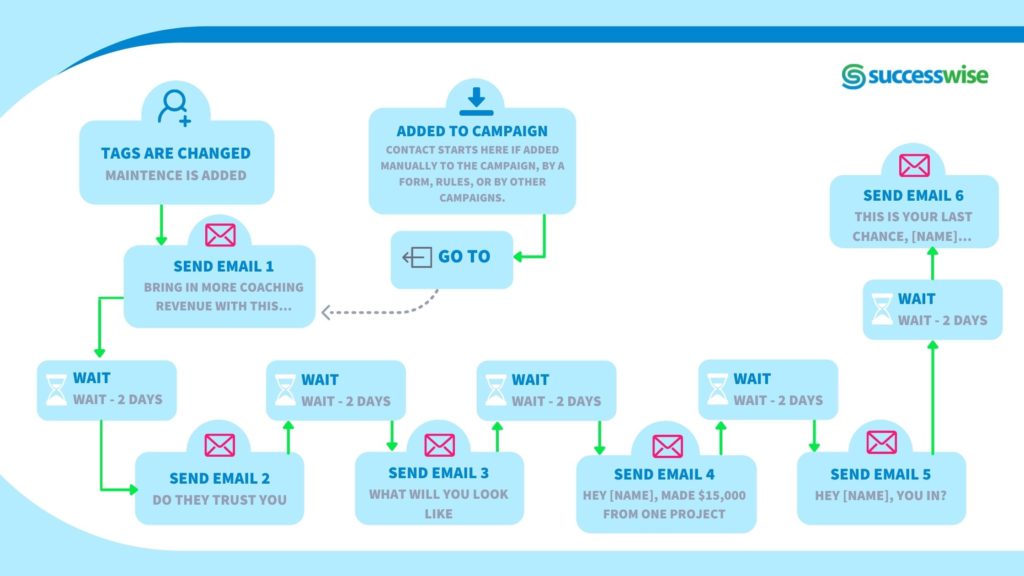
Consistency.
I've mentioned this before, and I'll mention it again. Every marketing asset you create needs to be consistent in the type of images you use, the tone of voice, messaging style, font, colors, etc. Getting this right requires management, or more importantly, a brand style guide.
A good brand style guide will include your logo and how to use it. For example, how much white space to leave around the logo, when to use a plain white logo and when to use the full-color version.
It'll also detail your company's visual direction—the images that are appropriate for your brand and look/feel you want to convey in your marketing campaigns.
It'll list your brand font, as well as the font size and color for headlines, subheadings, headers, hyperlinks, bold text, body copy.
Here's an example of a brand style guide that you can use when building your own brand.

Without a marketing strategy, you just have tactics (ads, social media posts, landing pages). Essentially, you have a campaign without any goal or direction. And randomly investing in marketing without a roadmap is a recipe for disaster or a chance to blow a ton of money.
Now, if you don't want to do that, you need a plan.
Think of your marketing strategy as the foundation for everything you do in business. It outlines:
This plan is crucial to the success of your marketing. If you need a fillable template, get it below:

If you're looking to get into coaching or build your personal brand, you need an ebook. Practically every mentor or consultant I deal with has written an ebook.
For me, an ebook is the ultimate business card and introduction to who you are, what you do, and why you're the right choice.
I've sold over 500, 000 copies of my ebook. And through it, I've built an engaged email list, been invited to speak at conferences all over the world, been interviewed on podcasts and radio shows, and landed many clients.
Having read my book, they’re already familiar with my methodology and my background. I've established credibility upfront, and I've built trust.
Most clients come to me asking to be coached. I don't have to go out hunting for them, and that's a far better way to do business.
I share tips on how to write your book here.
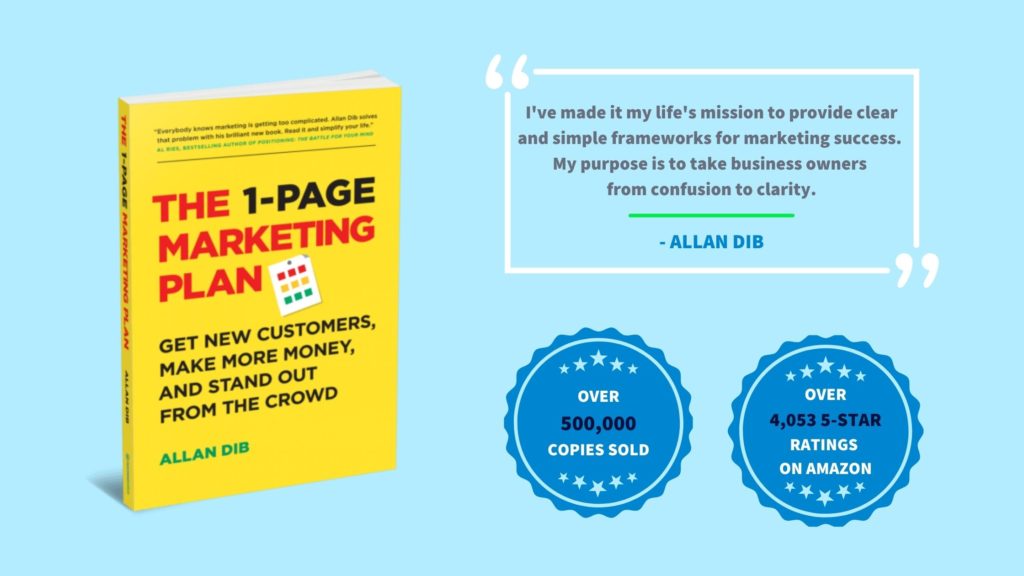
Remember, it's not just about creating marketing assets. The management of these assets is equally important. Just like your employees, you need to track their performance. Are they doing what you need them to do? And the only way to be sure is to know your data.
For example, there was a time I discovered that I didn't have a lead generation problem. I had a conversion problem. So, I had my management team go through every email, sales page, and our entire sales process to optimize.
I wouldn't have known what to prioritize without a clear view of the data (and an irontight infrastructure that would allow for it).
Start building your social presence. Invest in SEO and digital marketing. And good luck as you build your marketing assets.
You'll get new articles delivered straight to your inbox, plus special subscriber-only content such as podcasts, videos and live training events.

Get free weekly emails that make you smarter at marketing and help you grow your business